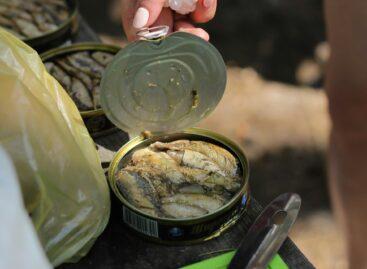Season of seasons
According to marketing books, one of the tools that can be used for boosting sales is creating new opportunities for purchasing. The sweets industry seems to be good student. In the beginning, there was fondants, chocolate bunnies and chocolate eggs and of course Father Christmas. Today, we can see a wide range of desserts and chocolates in seasonal packaging and a new feature is the appearance of gift packages. Since the Hungarian market is quite different from Western European markets, the mechanical copying of old ideas can be risky. We are not a good test market for seasonal products either, because we are small. Even so, Panna Miklós, brand manager of Nestlé Hungária says, innovations for this specific market are worth the trouble, though international products can reduce packaging costs significantly. There are a lot of seasonal importers who import whatever they can find at a low price, which means a lot of seasonal foreign products flood the market. Hungarian consumers are still open minded, as if they haven’t had enough disappointments yet – adds Imre Horváth, General Director of Sweet Point Zrt. However, a positive development is that Hungarian products seem to be adopted in foreign markets even more enthusiastically.
Seasonal SKU-s ( Stock Keeping Unit) represent more risk for both manufacturer and retailers than a product that is sold through the whole year. Bonbonetti has been working with ACNielsen to reduce this risk for years. The collaboration seems to be successful, as the quantity of merchandise returned to the factory after the season is getting less each year. Seasonal packaging is less risky than seasonal flavour, since the latter require more investment and time to develop. There are, however, categories like table chocolate, where competition is so intense, that taking such risk might pay off. Bonbonetti uses seasonal packaging in the sweetie segment.
Storck is focusing on the sweetie segment. Each of its premium products has a seasonal version, in several sizes and designs. They do not intend to enter new segments, but products for new occasions, like Halloween might be adopted. Since they do not have Hungarian products, their job is to choose items from the German assortment, which can become successful in the local market. Merci Petits is a recent success, which first appeared in the Hungarian market in the region. Seasonal versions of merci received a special cover which can be removed after the season, while its seasonal multipacks also contain standard products.
The size of the category is an important consideration. Sweeties represent roughly half the volume of table chocolates but the values are the same. Since sweeties are more risky, flavours are usually not experimented with and only packaging is subject to seasonal changes. When the season is over, we can get rid of the special “dress” and still have the SKU. The length of the season also matters. Easter is short, unlike Christmas, which covers several months, which means a long time is available for experimenting and selling. TV support for campaigns is relatively expensive even during the Christmas season. Timing is of paramount importance, since only weeks or days are available to sell the products. This is when field sales teams play a crucial role.
Seasonal products account for 40 per cent of the annual sales of Sweet Point products. According to Imre Horváth, it is easier to dictate trends in the seasonal market, than to follow them. It is also more practical. All manufacturers and retailers are aware of the risks with seasonal products, but that is the game. It is not convincing retailers need from manufacturers, but good service with good quality products.
Related news
Related news
KSH: Gross average earnings were HUF 605,400 in February 2024, 14.0 percent higher than a year earlier
In February 2024, the gross average earnings of those employed…
Read more >Sándor Czomba: 566 micro, small and medium-sized enterprises receive capacity-building support
566 people successfully applied for the capacity expansion support aimed…
Read more >UN: worldwide food insecurity continued to increase last year
The insecurity of the food supply has increased further in…
Read more >



